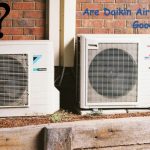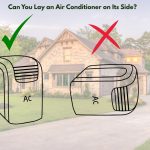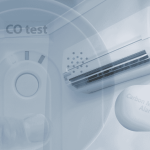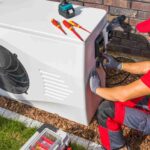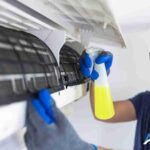Can you get carbon monoxide from air conditioner? It’s a question we hear all the time—and it’s one worth answering clearly. If you’re running your AC this summer and wondering whether it’s secretly releasing toxic gas into your home, you’re not overthinking. While most air conditioners don’t produce carbon monoxide, certain HVAC setups can pose a risk—especially when fuel burning appliances or heating units are involved. In this article, we’ll help you understand how carbon monoxide works, where it can come from, and how you can keep your indoor air safe, cool, and totally breathable.
Let’s clear the air—literally and figuratively.
In this guide, we’re going to walk you through what carbon monoxide (CO) is, how it’s generated, whether your AC is to blame, and most importantly—how you can protect yourself and your loved ones. The goal? To give you peace of mind and practical tools to make your home safer.
What Is Carbon Monoxide (CO)?
First things first: carbon monoxide is colorless, odorless, and tasteless. Sounds like a bad ninja, right? You can’t see it coming, but it can strike hard. It’s a byproduct of burning fuel—any kind of fuel: gas, oil, wood, charcoal. When fuel doesn’t burn completely, it releases CO, and that’s where trouble begins.
Unlike smoke, which usually sets off alarms and stings your eyes, carbon monoxide quietly builds up in closed spaces without any warning signs—unless you’ve got proper carbon monoxide detectors (we’ll get to those).
What are the Sources and Dangers of CO Poisoning?
You might be surprised to learn that the biggest culprits aren’t just faulty stoves or leaky furnaces. Many everyday fuel burning appliances like gas water heaters, fireplaces, and even running a car in a closed garage can contribute to elevated levels of carbon monoxide in your home.
And the danger? It creeps up on you. Symptoms of carbon monoxide poisoning start subtly—headaches, fatigue, dizziness—but can escalate to chest pains, confusion, and even death if ignored. Families often don’t realize something’s wrong until it’s too late. That’s why understanding and prevention go hand in hand.
What is the Role of Carbon Monoxide Detectors?
Think of carbon monoxide detectors as the security guards of your indoor air. They sense trouble before you do. If your house has any heating systems or devices that burn fuel, detectors aren’t optional—they’re essential.
Place them in central areas, near bedrooms, and especially close to fuel-burning appliances. Change their batteries every 6 months, and never silence an alarm just because you “feel fine.” Remember, carbon monoxide is colorless, odorless, and unforgiving.
Do Air Conditioners Release Carbon Monoxide?
Let’s bust the big question wide open: Can you get carbon monoxide from air conditioner units?
The short answer? Usually no—but it depends.
Most air conditioners—especially the modern ones—don’t burn fuel to produce cool air. That means they don’t produce carbon monoxide under normal operation. But as with all things mechanical, there’s a but.
Let’s get into the nuts and bolts, shall we?
How Does Air Conditioner Work?
ACs are like refrigerators for your rooms. They use refrigerant (a chemical coolant), compressors, coils, and fans to move heat out of your home and blow cool air in.
No flames. No burning. No fuel burning appliances in play here.
So if you’re using a standard electric air conditioner, you’re in the clear in terms of CO. However…
How Fuel-Powered Air Conditioners Can Cause Carbon Monoxide Leaks?
Some HVAC systems—especially older or combined heating and cooling units—use fuel like gas or oil to generate heat in winter and might share components like a heat exchanger. If that heat exchanger cracks or malfunctions, carbon monoxide can leak into your home through vents that also serve your cooling system.
So, while your air conditioning system might not produce carbon monoxide directly, it could become a vehicle for it if your system shares ductwork with a faulty furnace or fuel burning equipment.
Are Electric Air Conditioners Safe from Carbon Monoxide Risks?
With electric air conditioners, there’s no combustion, so the chance of a carbon monoxide leak is essentially zero. That said, we’ve seen wild misunderstandings—like people thinking a warm AC compressor or humming sound means CO is lurking. Not quite.
Common Misconceptions About CO Emissions
- My AC smells funny—must be carbon monoxide!
Actually, CO doesn’t have a smell. If there’s a smell, it’s probably mold, mildew, or a dead rodent (gross, but not fatal unless you inhale deeply). - CO leaks through AC vents!
Not unless it’s connected to a faulty furnace or fuel burning unit sharing the same ductwork. - I have chest pain—is it from my air conditioner?
Possibly not. But it’s always better to play it safe. CO might be coming from another source in your home. We always recommend a checkup—with your doctor and your HVAC system.
What are the Signs of Carbon Monoxide Leakage?
Now we’re getting to the real meat of the matter—how do you know if CO is leaking into your living space?
Here are some red flags:
- Persistent headaches or dizziness, especially when indoors
- Shortness of breath or chest pains that improve outdoors
- Confusion, nausea, or flu-like symptoms with no fever
- Pets acting strangely (yes, Fido might save your life!)
If symptoms include the above and multiple family members feel ill at the same time, that’s a major clue.
Also—if your carbon monoxide detectors are chirping, don’t brush it off. Open windows and doors, leave the house, and call emergency services or HVAC services right away.
How to Prevent Carbon Monoxide Risks?
Prevention isn’t just worth a pound of cure—it could save your life. Let’s talk steps:
Step 1: Install CO Detectors (And Actually Test Them)
As mentioned earlier, these are your early warning system. Install them, test them monthly, and change batteries twice a year.
Step 2: Schedule Annual HVAC Inspections
Your AC might not be the villain, but its proximity to your heating systems could turn it into an accomplice. Have your HVAC services technician check both heating and cooling components every year—especially that heat exchanger.
Step 3: Don’t Run Engines Indoors
It seems obvious, but running a car, lawnmower, or generator in a closed garage—even for a few minutes—can cause CO buildup fast.
Step 4: Ventilation is Key
Make sure any fuel burning appliances have proper vents. Blocked vents = big trouble. Keep windows and doors unobstructed when cooking or using combustion-based appliances.
Step 5: Replace Old Units Promptly
Old boilers, furnaces, and ACs often hide problems. If your system is older than your college-aged child, it might be time to upgrade.
Note:” Every region has codes and guidelines on indoor air quality and CO detection. In the U.S., many states mandate CO detectors in residential buildings. Builders must also follow HVAC safety codes, especially when dealing with fuel-burning appliances or integrated heating systems.”
Stay informed. And when in doubt, ask your local inspector or building code office.
The Best Alternative Cooling Solutions
Looking to cool your home without any combustion confusion? There are safer options out there:
Solar-Powered Air Conditioners
Eco-friendly and zero emissions—these are great in sunny climates and use panels to power the compressor and fans. Bonus: lower electric bills.
Evaporative Coolers (Swamp Coolers)
These work wonders in dry climates by pulling in warm air, passing it through water-saturated pads, and releasing cooled air. No fuel, no carbon monoxide, and way cheaper to run than traditional ACs.
Conclusion
Let’s face it—nobody wants to feel like they’re living in a science lab, sniffing the air for invisible dangers. But being informed is the first step to being safe. While standard air conditioners won’t produce carbon monoxide, connected fuel burning appliances or heating systems might.
So the next time someone asks, “Can you get carbon monoxide from air conditioner?”—you’ll know the answer. It’s a bit of a “yes, but mostly no” situation.
Keep your detectors fresh, your HVAC maintained, and your cool—literally.
FAQs:
No, a window air conditioner runs on electricity and doesn’t burn fuel, so it doesn’t emit carbon monoxide.
Central air conditioners themselves don’t leak carbon monoxide, but shared ducts with faulty heating systems can pose a risk.
Turn off your unit, open windows and doors, evacuate, and call HVAC services immediately to inspect for a carbon monoxide leak.
If your system includes any fuel burning appliances, a carbon monoxide detector is essential—even if you only run the air conditioner.
Yes, symptoms of carbon monoxide poisoning like chest pains can occur if CO is present—even if the air conditioning system isn’t the source.
